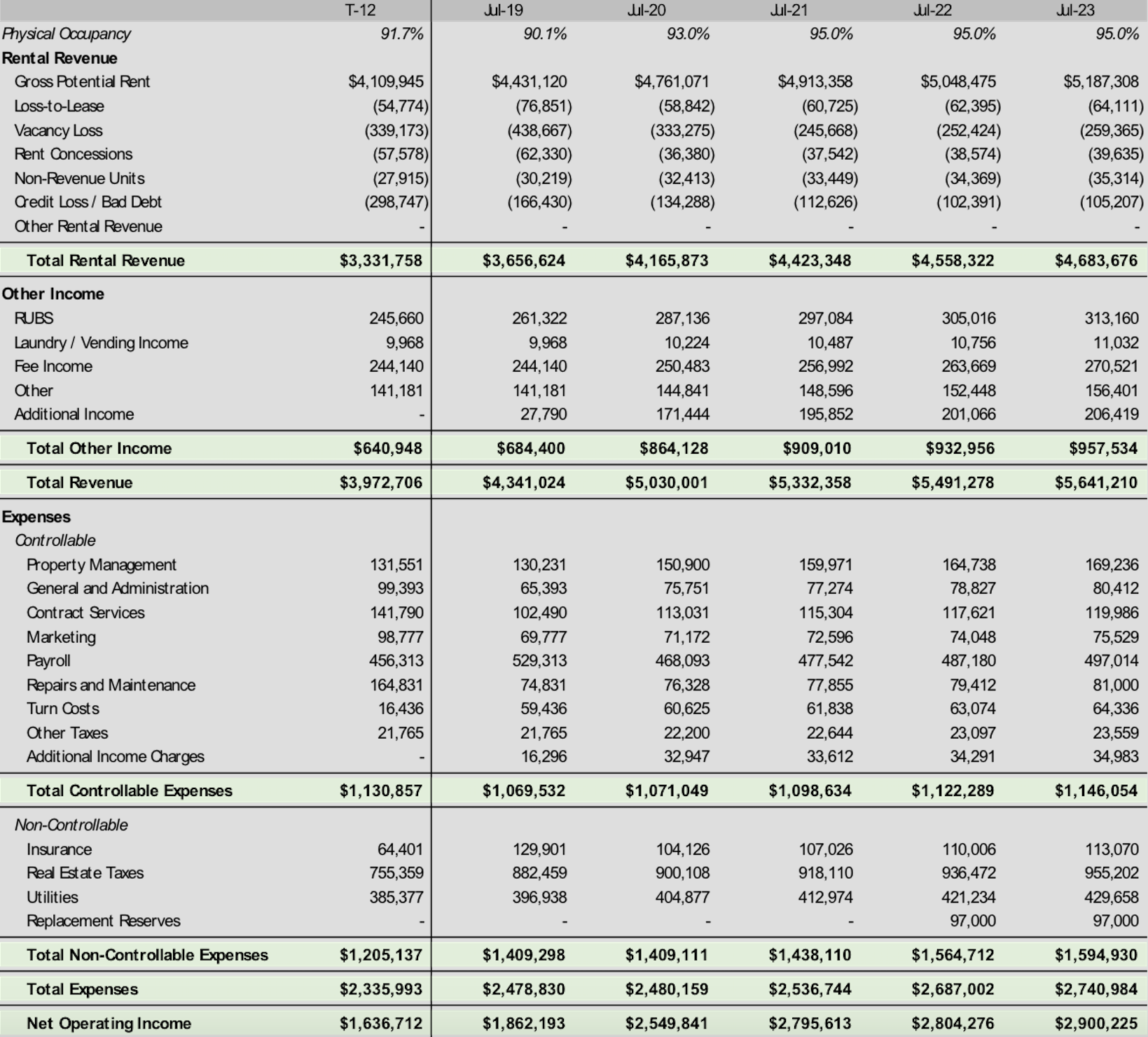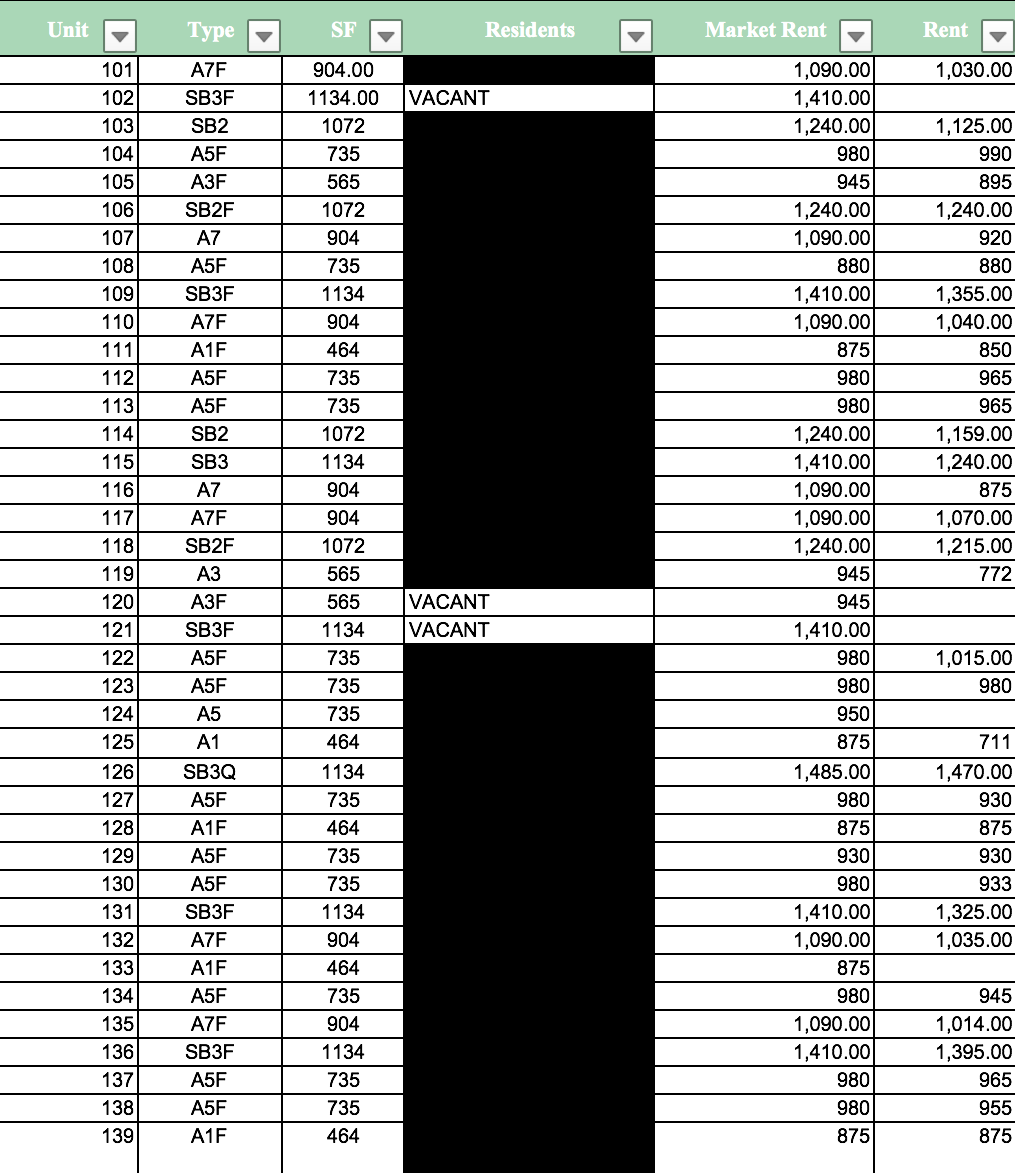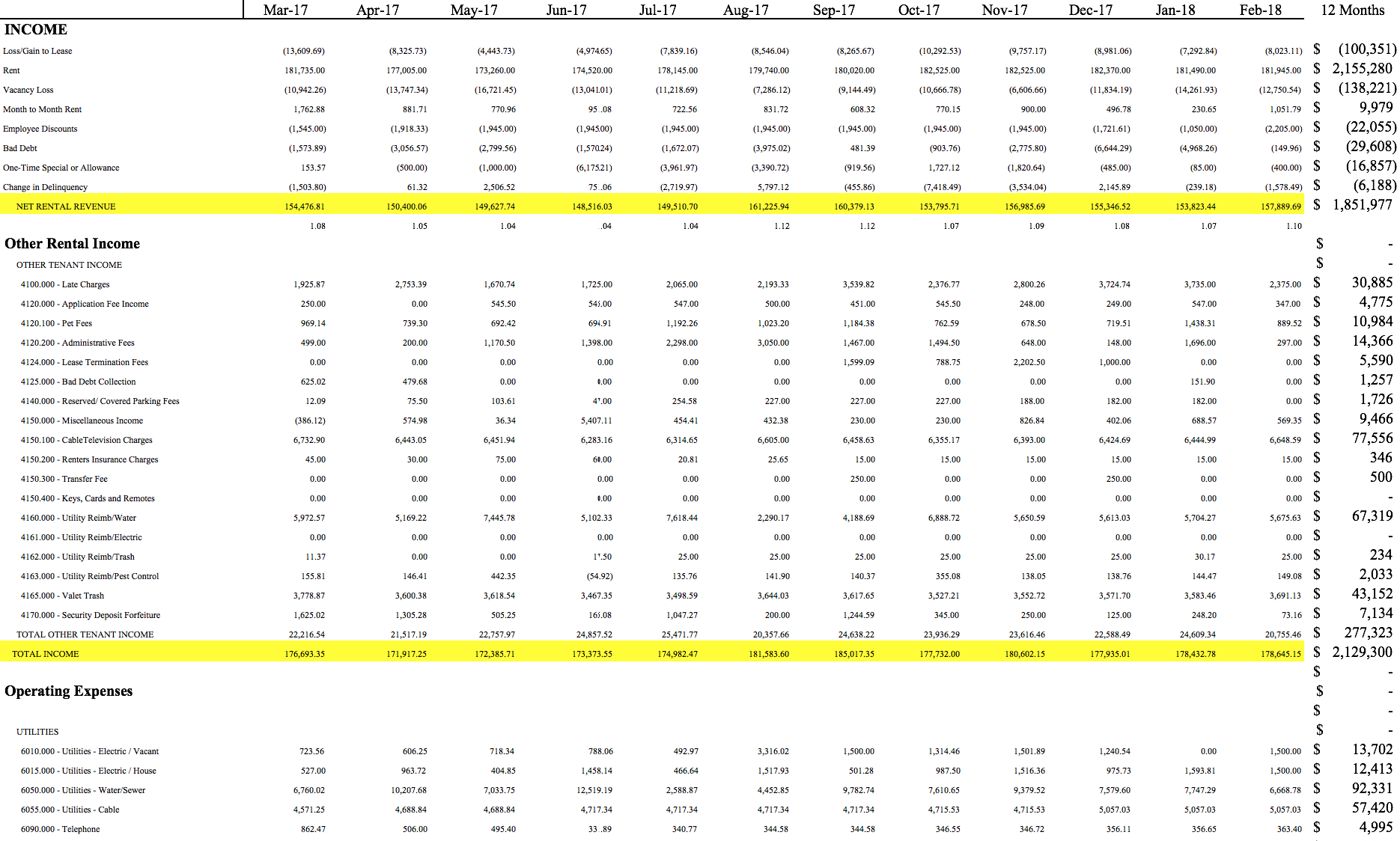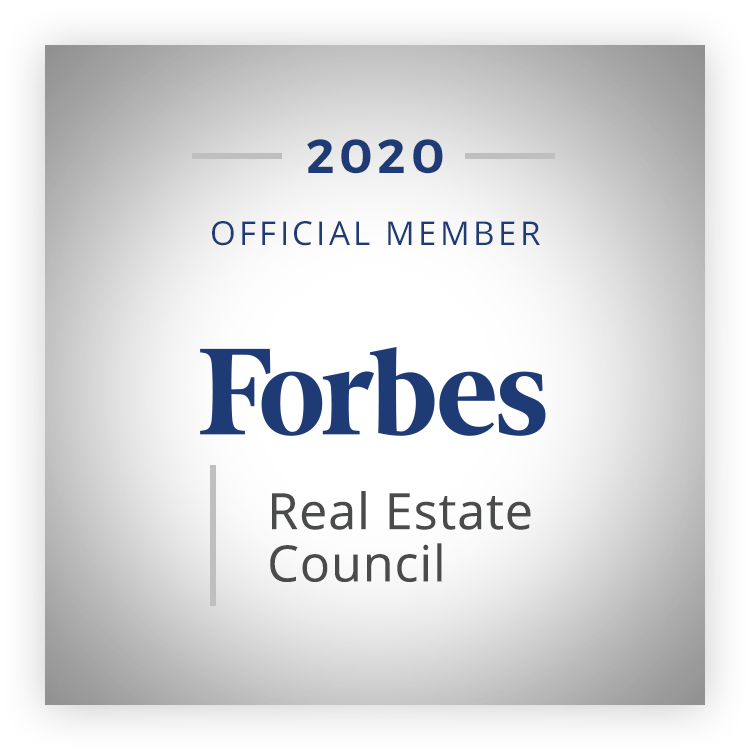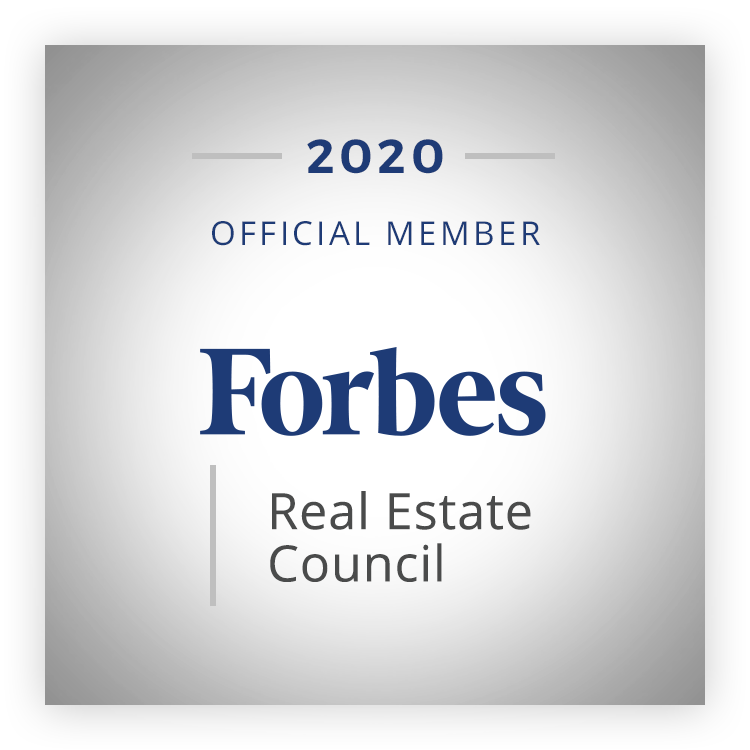sale proceeds
The sales proceeds are the profit collected at the sale of the apartment community.
For example, here is a how the sales proceeds is calculated for a 238-unit apartment community purchased at $12,500,000 and sold after a five year value-add business plan:
| Exit NOI | $1,125,713 |
| Exit Cap Rate | 5.9% |
| Exit Price | $19,079,881 |
| Closing Costs | ($191,836) |
| Remaining Debt | ($10,615,905) |
| Sales Proceeds | $8,272,140 |
internal rate of return (IRR)
The internal rate of return (IRR) is the rate, expressed as a percentage, needed to convert the sum of all future uneven cash flow (cash flow, sales proceeds and principal pay down) to equal the equity investment. IRR is one of the main factors the passive investor should focus on when qualifying a deal.
A very simple example is let’s say that you invest $100. The investment has cash flow of $10 in year 1, and $40 in year 2. At the end of year 2, the investment is liquidated and the $100 is returned.
The total profit is $50 ($10 year 1 + $40 year 2).
Simple division would say that the return is 50% ($50/100). But since time value of money (two years in this example) impacts return, the IRR is actually only 23.43%.
If we had received the $50 cash flow and $100 investment returned all in year 1, then yes, the IRR would be 50%. But because we had to “spread” the cash flow over two years, the return percentage is negatively impacted.
The timing of when cash flow is received has a significant and direct impact on the calculated return. In other words, the sooner you receive the cash, the higher the IRR will be.
cash-on-Cash (COC)
The cash-on-cash (CoC) return is the rate of return, expressed as a percentage, based on the cash flow and the equity investment. CoC return is calculated by dividing the cash flow by the initial investment.
For example, a 238-unit apartment community with a cash flow of $320,285 and an initial investment of $3,645,170 results in a CoC return of 8.8%
equity multiplier (EM)
Equity Multiplier (EM) is the rate of return based on the total net profit (cash flow plus sales proceeds) and the equity investment. EM is calculated by adding the sum of the total net profit and the gross cash flow and dividing it by the equity investment.
For example, if the limited partners invested $3,645,170 into a 238-unit apartment community with a 5-year gross cash flow of $2,020,165 and total proceeds at sale of $6,003,028, the EM is ($2,020,165 +$ 6,003,028) / $3,645,170 = 2.2.
market rent
The market rent is the rent amount a willing landlord might reasonably expect to receive, and a willing tenant might reasonably expect to pay for a tenancy, which is based on the rent charged at similar apartment communities in the area. Market rent is typical calculated by performing a rent comparable analysis.
gross potential rent (GPR)
The gross potential rent (GPR) is the hypothetical amount of revenue if the apartment community was 100% leased year-round at market rental rates.
For example, here is how the GPR is calculated for a 238-unit apartment building:
| Unit Type | # of Units | Bed/Bath | Market Rent |
| A1 | 56 | 1×1 | $747 |
| A2 | 98 | 1×1 | $798 |
| B1 | 84 | 2×1 | $984 |
| | | GPR | $202,692 |
gross potential income
The gross potential income is the hypothetical amount of revenue if the apartment community was 100% leased year-round at market rates plus all other income.
For example, a 238-unit apartment community with a GPR of $202,692 and monthly other income of $15,258 from late fees, pet fees and a RUBS program has a gross potential income of $217,950 per month.
loss to lease (LtL)
Loss to lease (LtL) is the revenue lost based on the market rent and the actual rent. LtL is calculated by dividing the gross potential rent minus the actual rent collected by the gross potential rent.
For example, a 238-unit apartment community with a GPR of $202,692 and with an actual rent of $173,870 has a LtL of 14.2%.
bad debt
Bad debt is the amount of uncollected money a former tenant owes after move-out.
concessions
Concessions are the credits (dollars) given to offset rent, application fees, move-in fees and any other revenue line time, which are generally given to tenants at move-in.
model unit
A model unit is a representative apartment unit used as a sales tool to show prospective tenants how the actual unit will appear once occupied.
employee unit
An employee unit is a unit rented to an employee at a discount or for free.
vacancy rate
The vacancy rate is the rate of unoccupied units. The vacancy rate is calculated by dividing the total number of unoccupied units by the total number of units.
For example, a 238-unit apartment community that has 18 vacant units has a vacancy rate of 7.6%
vacancy loss
Vacancy loss is the amount of revenue lost due to unoccupied units.
For example, a 238-unit apartment community that has 18 vacant units that rent for an average of $780 per unit per month has a vacancy loss of $168,480 per year.
effective gross income (EGI)
Effective gross income (EGI) is the true positive cash flow of an apartment community. EGI is calculated by the sum of the gross potential rent and the other income minus the income lost due to vacancy, loss-to-lease, concessions, employee units, model units and bad debt.
For example, if a 238-unit apartment community has a gross potential rent of $2,432,304, loses $145,938 due to vacancy (6% vacancy rate) and $149,561 in credit costs (loss-to-lease, concessions, employee units, model unit, bad debt, etc.) and collects $183,096 in other income, then EGI is $2,319,901.
economic occupancy rate
The economic occupancy rate is the rate of paying tenants based on the total possible revenue and the actual revenue collected. The economic occupancy rate is calculated by dividing the actual revenue collected by the gross potential income.
For example, a 238-unit property charges, on average, $851 per month per unit. Each month, a total of $3,021. is lost due to various concessions. There are 18 vacant units which could be rented for a total of $15,318 per month. Monthly bad debt is $4,365.
The physical occupancy rate is 92%: 220 occupied units / 238 total units.
The economic occupancy rate is 89%.
Current revenue = $2,158,008 = [($851 * 238) – $3,021 concessions – $15,318 vacancy loss – $4,365 bad debt] * 12 months.
Current revenue / total possible revenue = $2,430,456 / (238 units * 851 * 12 months) = 89%.



